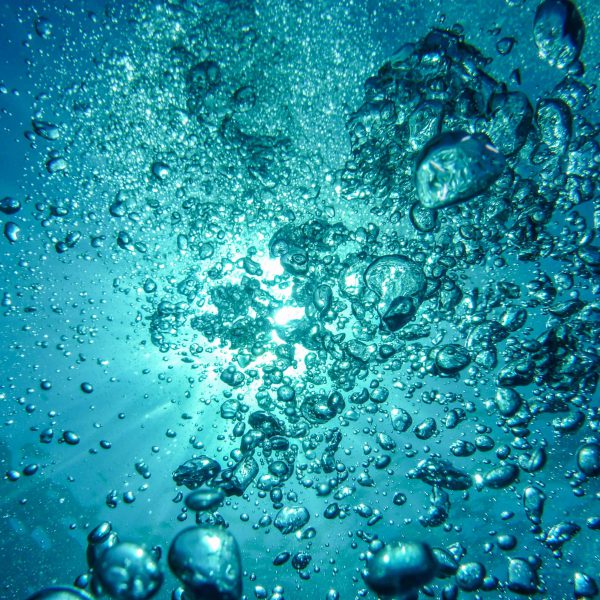Legionella and Facility Water System Safety
July 2018
The bacterium Legionella can cause a serious type of pneumonia called Legionnaires’ disease (LD) in people at risk. Outbreaks generally are linked to environmental reservoirs in large or complex water systems, including those found in healthcare facilities such as hospitals and long-term care facilities. Transmission from these water systems to humans requires aerosol generation, as can occur from shower heads, cooling towers, hot tubs,and decorative fountains. People can also get LD if contaminated water accidentally goes into the lungs while drinking.

Last month a resident at a New Jersey nursing home was diagnosed with LD. The resident, who has since recovered and is back at the nursing home, displayed no symptoms, but tested positive for the bacterium during an unrelated visit to a hospital. Tests identified a source of the bacteria to be a water tap in a sink in a resident’s bedroom. Additional tests are underway and the other residents are being more closely monitored.Any resident who exhibits signs of respiratory distress will be tested for the disease. A letter was sent to the staff and family members of all residents informing them of the formerly-infected patient and ongoing remediation plans.
Many people being treated at healthcare facilities, including long-term care facilities and hospitals, have conditions that put them at greater risk of getting sick and dying from LD. Risk factors include:
- Being a current or former smoker
- Having chronic lung disease, such as emphysema or chronic obstructive pulmonary disease (COPD)
- Having a weakened immune system from diseases like cancer, diabetes, or kidney failure
- Taking medication that weakens your immune system
Legionella can grow in parts of building water systems that are continually wet, and certain devices can spread contaminated water droplets via aerosolization. Examples of these system components and devices include:
- Hot and cold water storage tanks
- Water heaters
- Water-hammer arrestors
- Pipes, valves, and fittings
- Expansion tanks
- Water filters
- Electronic and manual faucets
- Aerators
- Faucet flow restrictors
- Showerheads and hoses
- Centrally-installed misters, atomizers, air washers, and humidifiers
- Nonsteam aerosol-generating humidifiers
- Eyewash stations
- Ice machines
- Hot tubs/saunas
- Decorative fountains
- Cooling towers
- Medical devices (such as CPAP machines, hydrotherapy equipment, bronchoscopes, heater-cooler units)
Healthcare facilities may put people at risk for LD when they do not have an effective water management program. These limit germ growth by:
- Keeping hot water temperatures high enough.
- Making sure disinfectant amounts are right.
- Keeping water flowing (preventing stagnation).
- Operating and maintaining equipment to prevent slime (biofilm), organic debris, and corrosion.
- Monitoring factors external to buildings, such as construction, water main breaks, and changes in municipal water quality.
According to Centers for Medicare & Medicaid Services (CMS), 42 CFR §483.80 for skilled nursing facilities and nursing facilities: “The facility must establish and maintain an infection prevention and control program designed to provide a safe, sanitary,and comfortable environment and to help prevent the development and transmission of communicable diseases and infections.”
CMS expects Medicare certified healthcare facilities to have water management policies and procedures to reduce the risk of growth and spread of Legionella and other opportunistic pathogens in building water systems.
The CDC provides a toolkit, “Developing a Water Management Program to Reduce Legionella Growth and Spread in Buildings: A Practical Guide to Implementing Industry Standards13.2,”
https://www.cdc.gov/legionella/downloads/toolkit.pdf.
The toolkit contains information on how to develop and implement a water management program to reduce your building’s risk for growing and spreading Legionella. If a program is already in place, the toolkit will help you assess and strengthen it. Include are practical resources to help you ensure that your water management program is comprehensive, effective, and in line with industry standards. It also highlights special considerations for healthcare facilities.
Sources and more helpful information:
Legionella (Legionnaires’ Disease and Pontiac Fever), CDC
https://www.cdc.gov/legionella/
“Requirement to Reduce Legionella Risk in Healthcare Facility Water Systems to Prevent Cases and Outbreaks of Legionnaires’ Disease(LD),” Revised 07.06.2018 to Clarify Expectations for Providers, Accrediting Organizations, and Surveyors



















